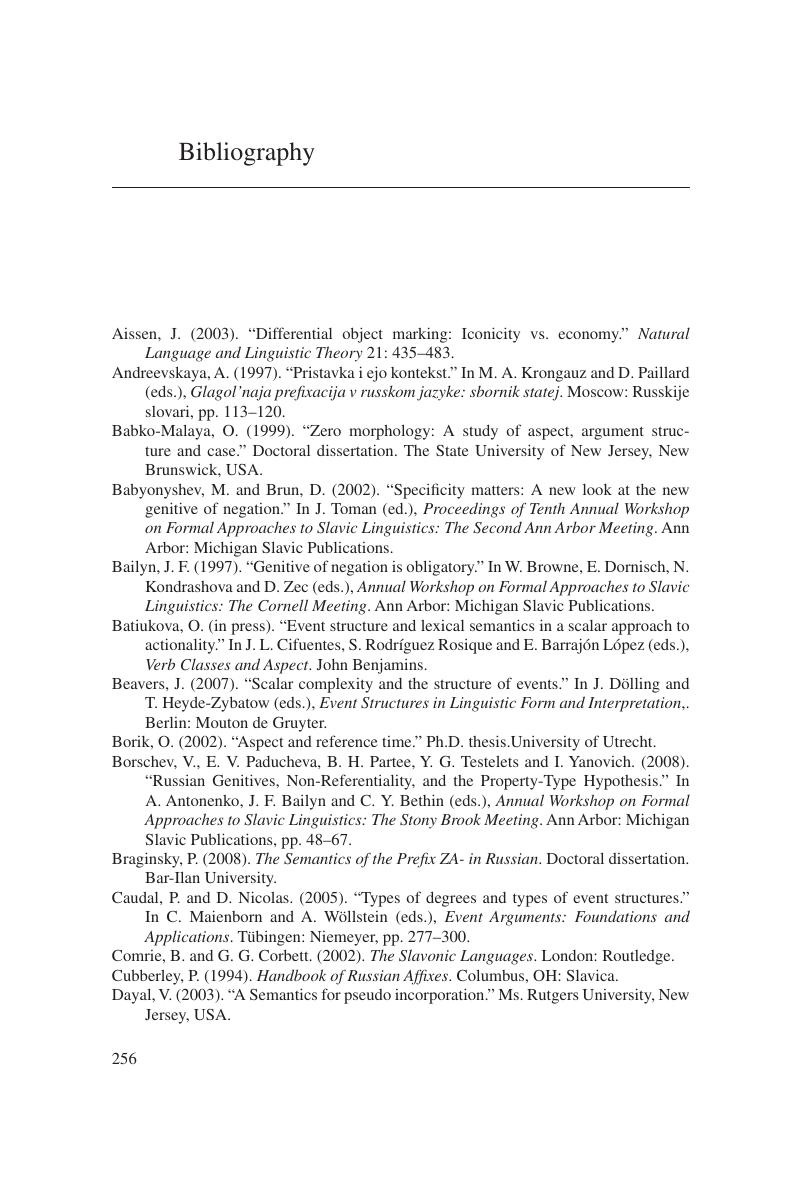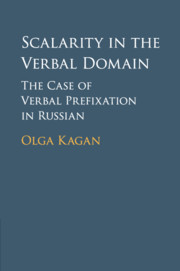Book contents
- Scalarity in the Verbal Domain
- Scalarity in the Verbal Domain
- Copyright page
- Contents
- Figures
- Tables
- Book part
- Introduction
- 1 Scalarity and verbal prefixation
- 2 The prefixespo-,na- andpro-
- 3 The prefixesdo-,nedo- andpri-
- 4 The prefixespod- andpere-
- 5 The prefixesot- andza-
- 6 Prefixes characterized by stronger restrictions
- 7 The Scale Hypothesis: principles and parameters
- 8 Prefixational genitive
- Conclusion
- Book part
- Bibliography
- Index
- References
Bibliography
Published online by Cambridge University Press: 05 November 2015
- Scalarity in the Verbal Domain
- Scalarity in the Verbal Domain
- Copyright page
- Contents
- Figures
- Tables
- Book part
- Introduction
- 1 Scalarity and verbal prefixation
- 2 The prefixespo-,na- andpro-
- 3 The prefixesdo-,nedo- andpri-
- 4 The prefixespod- andpere-
- 5 The prefixesot- andza-
- 6 Prefixes characterized by stronger restrictions
- 7 The Scale Hypothesis: principles and parameters
- 8 Prefixational genitive
- Conclusion
- Book part
- Bibliography
- Index
- References
Summary

- Type
- Chapter
- Information
- Scalarity in the Verbal DomainThe Case of Verbal Prefixation in Russian, pp. 256 - 262Publisher: Cambridge University PressPrint publication year: 2015



